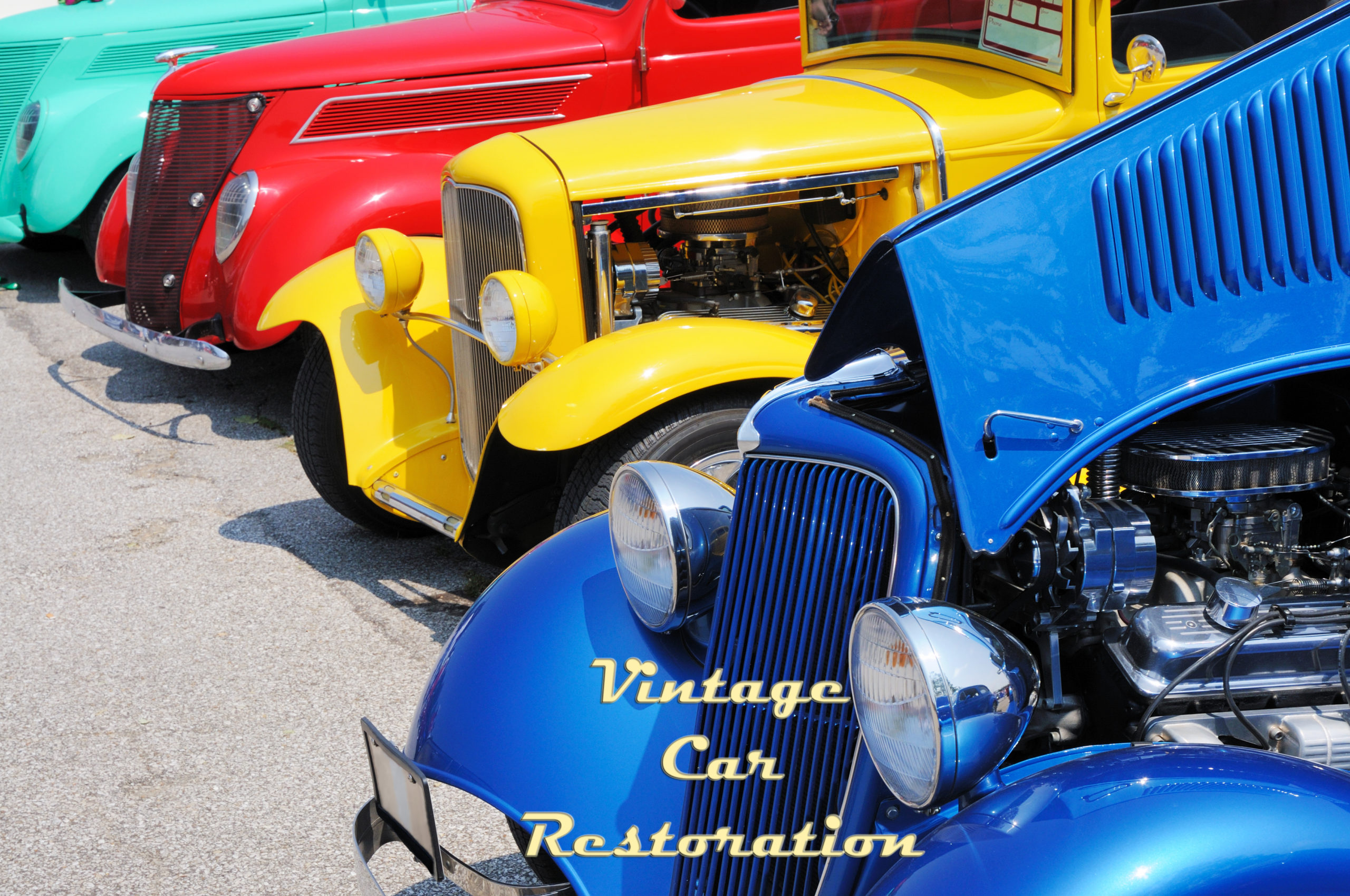
The past is calling. Which classic cars are you driving?
Vintage car restoration is booming. American-made Hot Rods, Muscle Cars, and antique classics continue to attract collectors and dominate car shows across the country. More and more enthusiasts are searching for vintage models and restoring them to their original, showroom condition.
So when did vintage car restoration really take off? Which classic American cars are the best to restore? And how has Super Alloy 1 revolutionized the restoration process? Keep reading for a deep dive into everything you need to know about vintage car restoration.
The History of Car Collecting & Restoration in the US
Car restoration as a hobby began as early as the 1930s. People would find junked, broken, resold, or otherwise forgotten old cars and restore them to working function.
Car collecting gained popularity after World War II, and soon after, vintage car restoration became a growing hobby. The 1950s brought a surge of innovation and automotive creativity, setting the stage for a golden era in car design. By the end of the decade, General Motors, Ford, and Chrysler—known as the “Big Three”—led the way in new car sales.
As time went on, interest in restoring classic American cars only grew stronger. When the foreign car market exploded in 1973, demand for American-made vintage vehicles surged, making them even more desirable among collectors and restorers.
What’s the Difference Between Classic, Vintage, and Collector Cars?
Not every old car qualifies as a classic—just because it looks out of place among today’s daily drivers doesn’t mean it meets the criteria. If you’re just getting started with vintage car restoration, you might be unsure where your vehicle fits in. The terms “classic,” “vintage,” and “antique” often get used interchangeably, but they actually refer to different categories. Here’s a simple breakdown to help clear up the confusion:
-
Classic Cars – Typically, a vehicle needs to be at least 20 years old to earn the “classic” label. Cars built in 1980 or later often fall into the “collector car” category.
-
Vintage Cars – These are cars manufactured between 1919 and 1930, often celebrated for their craftsmanship and historical value.
-
Antique Cars – A car generally qualifies as an antique if it’s over 45 years old. Vehicles produced from 1900 through the late 1970s often fall into this range.
Keep in mind, these definitions can vary depending on the source. State DMVs, insurance providers, and car clubs may each define these terms differently, and there’s often some overlap—especially between classic and antique classifications.
Understanding how your vehicle is categorized can help you navigate the vintage car restoration process more accurately, from finding parts to registering your car and even getting it insured.
What are the Best American Vintage Cars to Restore?
While it’s up to your personal preferences, here’s a list of the most popular, expensive, and sought-after vintage cars to restore.
1967–1969 Chevy Camaro: The Camaro is one of the most popular classic American cars to restore. The first generation of this compact performer by Chevy was built from 1967 to 1969 and featured every engine family in Chevy’s lineup. There’s a Camaro for every type of car restoration enthusiast, and virtually every part is reproduced.
1964–1972 Chevy Chevelle: This midsize hotrod was one of America’s favorite muscle cars. The Chevelle first hit the market in 1964, just in time to ride the muscle car wave. There are plenty of original Chevelles still around today, making them slightly easier to restore.
1968–1972 Chevy Corvette: Nothing really screams Americana like an old Corvette. These cars combine the perfect mix of beauty, engineering, power, and historical significance. Corvettes from 1968 to 1972 are currently the most popular.
1964–1973 Ford Mustang: Up next is the beloved Ford Mustang. First-generation Mustangs were built between 1964 and 1973. Most Ford enthusiasts have an old Mustang at the top of their most-desired list. These cars make a great vintage car restoration project because they are relatively inexpensive to acquire. There’s a lot of information readily available about them for restoration help, and parts are not too difficult to find.
Tip: If you’re looking to save some money on your next project, consider a Mustang in coupe or convertible form, they’re generally less expensive.
1932 Ford: If you’re on the hunt for the ultimate vintage automobile. It’s the 1932 Ford. The Deuce was the world’s first popularly priced car to deliver a V8 engine, and this car has been a sensation in the marketplace for nearly a century.
Did you know this car sold new for as little as $485 in 1932?
Repairing American Vintage Cars the Right Way
For decades, collectors have prized vintage cars not just for their beauty but also for their historical value. Many of these classic vehicles require parts that were only made during their original production runs. As a result, anyone involved in vintage car restoration often has to hunt down original models just to find usable replacement parts. It’s common for enthusiasts to spend hours digging through junkyards, browsing online forums, or checking with small, independent auto shops to track down that one missing piece.
This is where Super Alloy 1, a low-temperature multi-metal and pot metal solder, comes in handy. Before Super Alloy 1, many classic car collectors used Bondo fillers to patch body damage, which is frowned upon because classic cars should be 100% original. With Super Alloy 1, car restoration specialists repair pits in the parts and build up broken or missing parts for these rare pieces while preserving the vehicle’s integrity.
